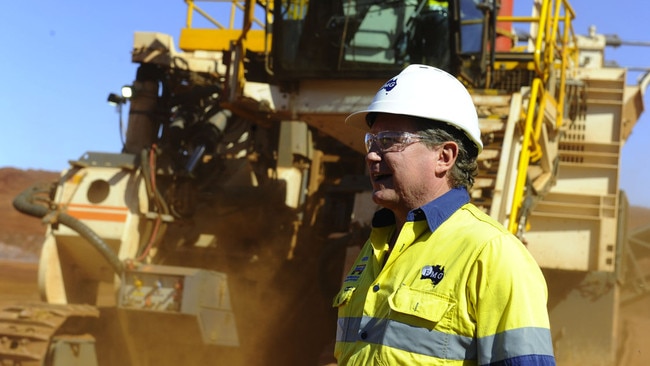Taxpayers back Alinta-Fortescue solar project
Taxpayers will help a HK family-owned firm provide renewable power to Andrew Forrest mines.

Taxpayers will help bankroll a solar project owned by a Hong Kong billionaire family that will provide power to the iron ore mines of one of Australia’s richest people.
A planned partnership with Alinta Energy will allow Andrew Forrest’s Fortescue Metals Group to run much of its Chichester Hub in Western Australia with renewable energy in daytime.
The taxpayer-funded duo Northern Australia Infrastructure Facility and the Australian Renewable Energy Agency have agreed to tip in more than half of the $221 million needed to develop a 60 megawatt solar-gas hybrid power system in WA’s Pilbara region.
The site is on the doorstep of Fortescue’s Chichester iron ore mines.
NAIF and ARENA will lend $90m and $24.5m respectively to the project, which will help reduce Fortescue’s use of diesel to generate power for its mines.
Fortescue says once completed, the solar power will provide up to 100 per cent of “daytime stationary energy requirements” at the Chichester Hub, with the rest coming from integrated battery storage and gas power.
Alinta Energy managing director Jeff Dimery said Fortescue had demonstrated “terrific leadership” by supporting the project and flagged that the company would also look to supply power to other miners in the region.
“The Chichester project alone is expected to displace 100 million litres of diesel generation annually from the Pilbara, and we hope that can be increased as others in the region see what we can achieve with Fortescue,” Mr Dimery said.
Fortescue chief executive Elizabeth Gaines said the new project would significantly reduce the company’s emissions while also potentially lowering its production costs.
“This landmark project is a first on this scale for the Pilbara and will reduce carbon emissions from stationary generation by around 40 per cent at Fortescue’s Christmas Creek and Cloudbreak mining operations, while driving long-term sustainable cost reductions to maintain Fortescue’s global cost leadership position.
Alinta was acquired by Hong Kong’s Chow Tai Fook, owned by the billionaire Cheng family, in 2017 for $4 billion.
Fortescue, meanwhile, posted a record $US3.2 billion profit last financial year. Mr Forrest’s 33 per cent stake in Fortescue is currently valued at just under $8 billion.
NAIF chief executive Laurie Walker said the loan would pave the way “towards the creation of a more interconnected regional energy grid in the Pilbara”.
Fortescue produced 1.85 million tonnes of carbon dioxide equivalent in fiscal 2019, up 10 per cent from the year before, Fortescue said in its most recent corporate social responsibility report.
That’s the equivalent of the greenhouse gas emissions for a year from 392,781 passenger cars or 0.475 coal-fired power plants, according to a calculator on the US Environmental Protection Agency’s website.
Fortescue expects its absolute emissions to increase in the short term as it expands its operations, but is committed to reaching net-zero emissions in the second half of the century, the company said in that report.
Ms Gaines said the mining giant also planned to invest $US250 million ($A366m) in energy transmission infrastructure.
With AAP


